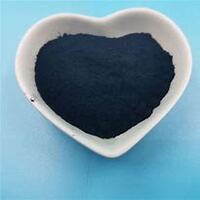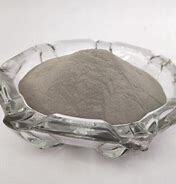Overview of 3D Printing Powder Spherical Niobium Mo Ta W V Metal Powder for Additive Manufacturing
Niobium, often found in conjunction with tantalum minerals, is primarily extracted as a byproduct of tin and tantalum mining. Its chief ores include pyrochlore and columbite. Once refined, niobium becomes highly versatile, finding application in alloys, superconductors, and various high-tech materials.
Feature of 3D Printing Powder Spherical Niobium Mo Ta W V Metal Powder for Additive Manufacturing
-
Superior Strength and Lightness: When added to steel in small quantities (typically less than 1%), niobium significantly enhances the strength and toughness of the alloy while reducing its weight, making it ideal for aerospace and automotive applications.
-
Corrosion Resistance: Like tantalum, niobium forms a passive oxide layer that protects it from corrosion, making niobium-based alloys suitable for use in harsh environments.
-
Superconductivity: Niobium exhibits excellent superconducting properties when cooled below its critical temperature of about 9.2 K (-264°C or -443°F). This property makes it the primary material for superconducting magnets used in MRI scanners and particle accelerators.
-
Magnetic Properties: Niobium is paramagnetic at room temperature but becomes strongly diamagnetic when cooled, meaning it repels magnetic fields. This characteristic is exploited in certain specialized applications.
-
Ease of Fabrication: Despite its strength, niobium is easily formed, welded, and machined, facilitating its use in complex engineering designs.

(3D Printing Powder Spherical Niobium Mo Ta W V Metal Powder for Additive Manufacturing)
Parameters of 3D Printing Powder Spherical Niobium Mo Ta W V Metal Powder for Additive Manufacturing
The parameters you’re referring to refer to the properties of a powder used in 3D printing, specifically those related to its spherical shape, niobium content (Ni), mo, ta, and w materials, as well as the overall particle size range.
1. Niobium Content (Ni): The presence of Ni in a powder affects its meltability, flow behavior, and resistance to wear and tear. A higher niobium content results in a more solid and harder powder that can withstand high temperatures during printing.
2. Mo: Mo is a critical material for achieving high-fidelity surfaces, particularly in applications requiring mechanical strength. It improves the powder’s melting behavior and can significantly reduce stress concentration within the printed parts.
3. Ta: Ta is an important thermal stability modifier that helps control the cooling rate inside the nozzle and can improve the surface finish and strength of the printed part. Its addition to the powder enhances the properties of the final product.
4. W: W is often added to promote high-quality prints with excellent mechanical properties such as improved wear resistance, lower tensile strength, and reduced swelling.
5. Particle Size Range: The particle size of the powder also plays a crucial role in its 3D printing performance. Smaller particles tend to have better adhesion and biocompatibility with other materials and components in the final structure, while larger particles may cause problems with printing efficiency or quality control.
To determine the optimal powder composition for a specific 3D printing application, it is essential to experiment with different combinations of these elements to achieve the desired properties and performance characteristics. Some common factors that affect powder parameters include:
* Melting point and glass transition temperature (Tg/Td)
* Coefficient of thermal expansion (α)
* Chemical formula and composition (e.g., Ni-Fe-Si, Mo-Mo-Ta-W)
* Surface area and porosity
* Substrate compatibility
When selecting a powder for 3D printing, consider the following recommendations:
* niobium content: Choose a powder with a reasonable niobium content to balance the properties needed for the intended application.
* mo: Ensure that the chosen powder has good flow properties and adequate stress distribution for each material in the final structure.
* ta: Choose a powder with low α to minimize stress concentration and improve print quality.
* w: Consider the effects of w on the printed part’s mechanical properties and choose a powder with appropriate w values.
* particle size range: Select a powder with a suitable particle size range that matches the requirements of your specific application.

(3D Printing Powder Spherical Niobium Mo Ta W V Metal Powder for Additive Manufacturing)
Company Profile
Metal in China is a trusted global chemical material supplier & manufacturer with over 12-year-experience in providing super high-quality copper and relatives products.
The company has a professional technical department and Quality Supervision Department, a well-equipped laboratory, and equipped with advanced testing equipment and after-sales customer service center.
If you are looking for high-quality metal powder and relative products, please feel free to contact us or click on the needed products to send an inquiry.
Payment Methods
L/C, T/T, Western Union, Paypal, Credit Card etc.
Shipment
It could be shipped by sea, by air, or by reveal ASAP as soon as repayment receipt.
FAQ

(3D Printing Powder Spherical Niobium Mo Ta W V Metal Powder for Additive Manufacturing)





